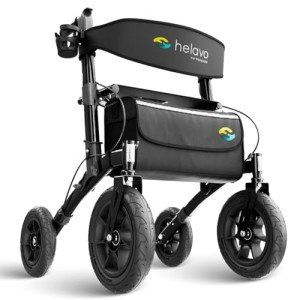5 Mobility Aid Projects That Work For Any Budget
Understanding Mobility Aids: Enhancing Independence and Quality of Life
Mobility help play a vital function in supporting people with restricted mobility, allowing them to carry out day-to-day activities with greater ease and boosting their quality of life. These devices range from easy tools to more intricate devices, each created to fit specific needs and offer assistance in numerous contexts. This post will explore the types of mobility help available, their benefits, and important considerations for choice.
What Are Mobility Aids?
Mobility aids are gadgets designed to help people in moving around more efficiently and securely, whether in their homes, neighborhoods, or healthcare settings. They help in reducing the danger of falls, promote independence, and improve the total lifestyle for those with mobility difficulties due to age, disability, or temporary injuries.
Typical Types of Mobility Aids
The range of mobility aids available can be overwhelming. Below is a comprehensive table that details the most common types, their features, and typical use cases.
Kind Of Mobility Aid
Description
Typical Use Cases
Wheelchairs
Wheeled gadgets for individuals unable to walk; can be manual or electrical.
Long-lasting impairments, post-surgical recovery
Walkers
Frame-like gadgets that offer support while walking; often includes wheels for much easier motion.
Older grownups, those recovering from surgery
Walking canes
Single-point or multi-point rods utilized for balance and support.
Mild to moderate mobility issues, instability
Crutches
Wisely developed support for people with leg injuries.
Short-term injuries, healing from surgical treatment
Scooters
Motorized mobility help for outdoor use or cross countries.
Persistent conditions that restrict walking capacity
Raise Chairs
Recliner chair chairs that can elevate users for simpler standing.
Minimal strength or balance, elderly people
Home Modifications
Structural modifications such as ramps and get bars to enhance gain access to.
Numerous levels of mobility impairment
The Benefits of Mobility Aids
Mobility help supply numerous advantages to users:
Enhanced Independence: Users can walk around more easily, decreasing their dependence on caregivers.
Increased Safety: Aids like walkers and canes assist preserve balance and decrease fall dangers, which is especially vital for elderly users.
Improved Quality of Life: With higher mobility, users can engage more fully in social, recreational, and individual activities.
Increased Accessibility: Mobility help can assist users navigate their homes and communities better, resulting in enhanced access to necessary services.
Discomfort Relief: By offering support while walking or standing, mobility help can ease some pain related to conditions like arthritis.
Factors to consider for Choosing the Right Mobility Aid
Choosing the suitable mobility aid frequently needs careful consideration. Here are some vital aspects to remember:
Level of Mobility: Different aids accommodate various levels of mobility. Assess my website and balance to figure out the most suitable option.
Weight Capacity: Ensure the chosen gadget supports the user's weight.
User Environment: Consider where the mobility aid will be used, such as indoors, outdoors, or in congested spaces.
Ease of Use: The device ought to be easy to operate for the individual, considering their strength and dexterity.
Storage and Transportation: Consider how the mobility aid will be transported, especially if it is utilized outside the home.
Cost and Insurance Coverage: Factor in the price of the gadget and inspect if insurance can help cover the expense.
Regularly Asked Questions (FAQ)
Q1: How do I know which mobility aid is ideal for me?A1: Consultation with a doctor is suggested. They can examine your specific needs and advise appropriate help based upon your mobility level, health condition, and living environment.
Q2: Are mobility help covered by insurance coverage?A2: Many insurance strategies do cover mobility aids, however protection varies significantly. Check with your insurance coverage company relating to specifics.
Q3: Can mobility aids be rented?A3: Yes, many medical supply companies offer rental options for mobility aids, which can be an economical solution for short-lived needs.
Q4: How can I ensure my mobility aid is maintained?A4: Regular upkeep is necessary for security and longevity. Follow the maker's guidelines for maintenance and take it for routine expert checks.
Q5: What modifications can be made to homes for much better mobility?A5: Ramps, get bars, and non-slip flooring are very important adjustments that can boost security and availability for users of mobility help.
Mobility aids are indispensable tools that empower individuals with limited mobility. By improving self-reliance and promoting security, these aids significantly improve the lifestyle for users. When selecting a mobility aid, it is crucial to think about individual requirements, choices, and environments to maximize benefits. Consulting a health care professional can help browse the options readily available. As society continues to focus on ease of access, having notified discussions about mobility help will make sure that people can lead fuller, more independent lives.
In the grand plan, mobility help are not just physical devices; they are secrets to unlocking a world of possibilities and motivate active participation in life. From wheelchairs to walking sticks, each aid uses special advantages created to satisfy the diverse needs of users, fostering a much better, more inclusive community.
